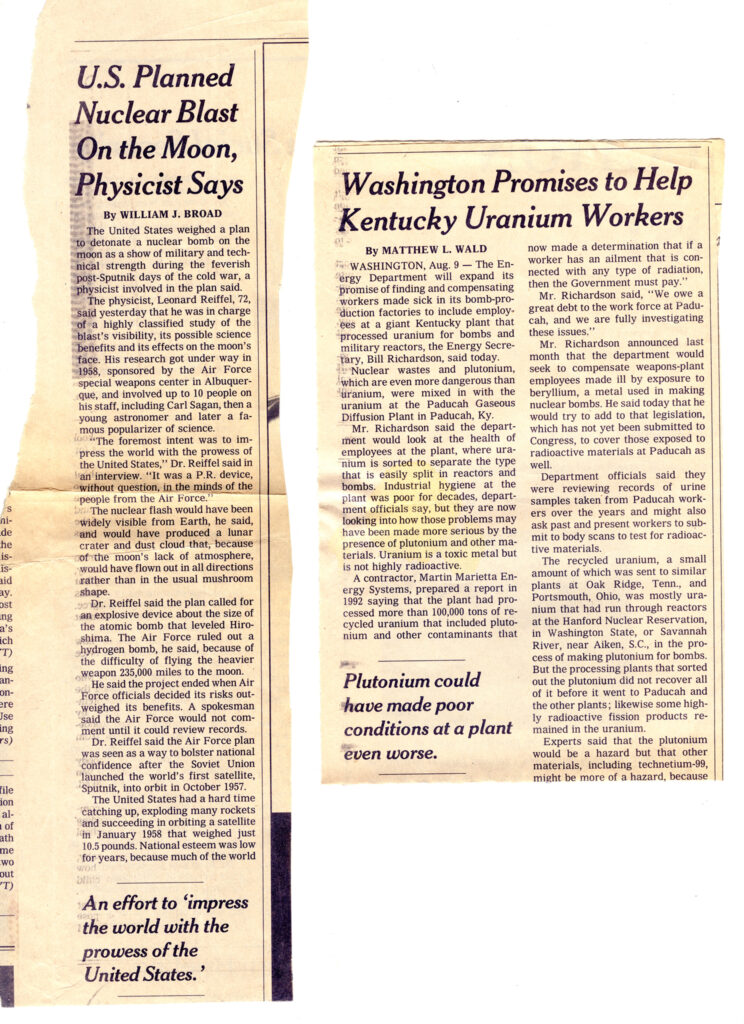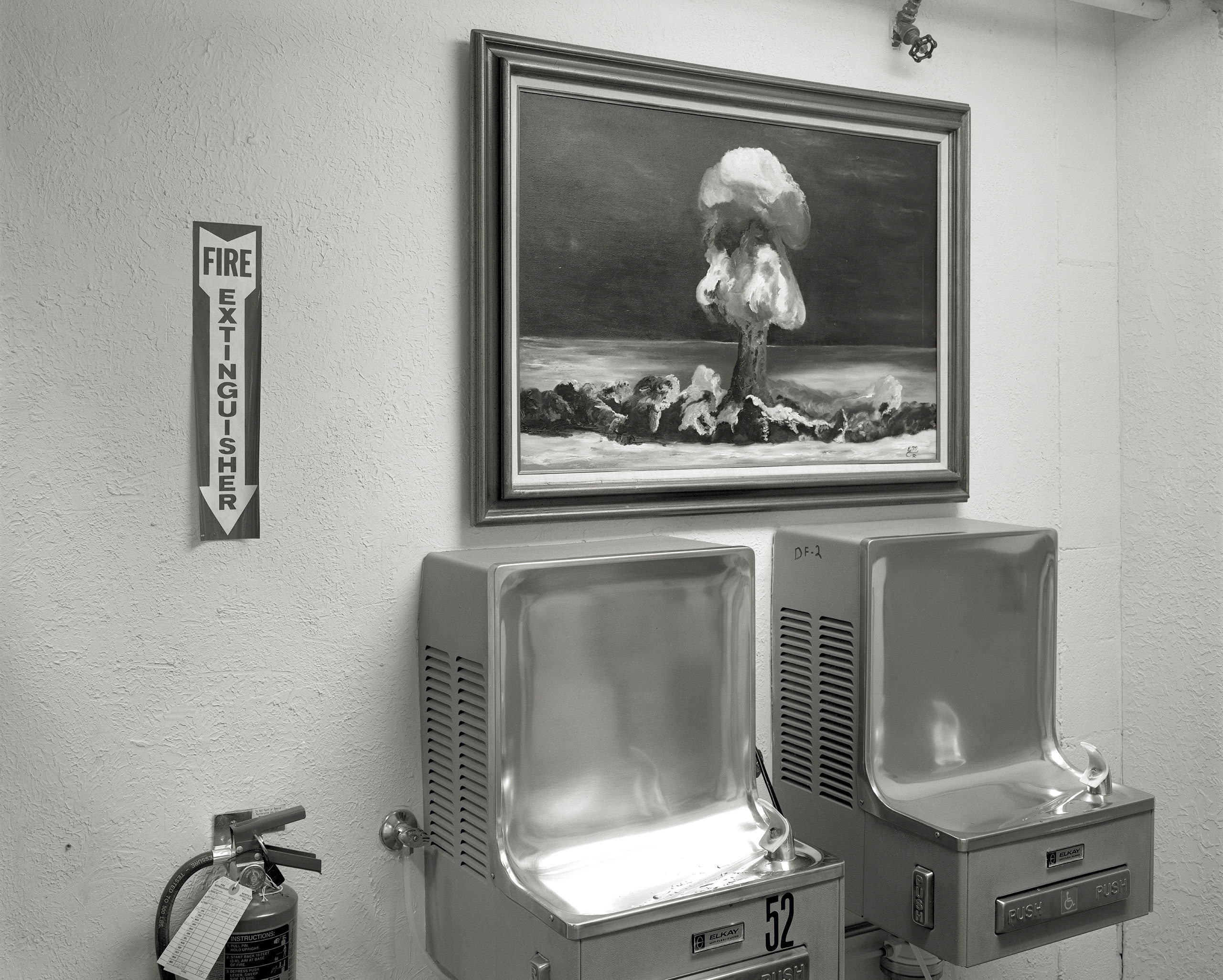National Museum of Nuclear Science and History, Albuquerque, Rio Grande, 1996
National Museum of Nuclear Science and History, Albuquerque, Rio Grande 1996
Part Two of Southern Trilogy. A New Deal for The South with Water, Energy and Power.
Riverworks, documenting the energy and defense projects along the rivers of the southeast, with the Tennessee River (and The Tennessee Valley Authority) as centerpiece. It was the history of the New deal and TVA and environmental awareness that inspired me for this project. There is a dichotomy between the formal beauty of these bold, concrete structures of power plants, dams and cooling towers with their looming presence in the landscape and their mark they leave on the land. Riverworks was an ongoing project for much of the 1990’s venturing beyond the South to other regions photographing power plants and dams from Arizona to Maine.
Wednesday, December 11, 1991, Oak Ridge, TN
There was frost on the windshield when I woke up this morning in Spring City. I drove on rural roads along the shores of Watts Bar Lake to a sleepy town called Rockwood, edged between the lake and the foothills of Walden Ridge. With all its decorations up on Main Street, the town was ready for Christmas.
Bernard’s, a clothing store that didn’t seem to care much about updating stock since the late fifties, had oversized women’s underwear on display in the front window. The store looked too big for the ample items it was still selling. I talked to the owner, Maurice Greif, about the nearby lake and the pollution of it by PCB’s and Cesium 137 from upstream power plants and the Oak Ridge National Laboratory. It wasn’t anything that worried him as you couldn’t really see it, he told me. The lake appeared peaceful to him and he dreamed about retiring on its shores. He claimed that beauty is in the eye of the beholder. This part of the country has some of the highest cancer rates and yet, the people didn’t seem to care of what was going on. Maurice didn’t believe there was ever a landing on Mars, which I contested. He thought that the closest animal species related to dinosaurs were gorillas, because of their size. It is in these places where industries and government build their polluting facilities without much opposition from the locals.
Oak Ridge, the secret city on the banks of the Clinch River, was built from scratch during the Second World War as part of the Manhattan Project for the development and construction of the first atom bomb. Within a couple years, during the construction of all the buildings, some to become the largest ever built, the population grew to 70.000 workers, most of them unaware of the nature of their work.
Now, the task of the Department of Energy was to figure out what to do with the nations growing nuclear waste. They put up a museum about it in town, with wonderful displays and hands on activities for the kids! Sadly, the average attention span of the visiting schoolkids was too short to finish any of the interactive computerized panels. A sign of disappointment appeared quickly on a few faces when they realized they weren’t playing a video game.
One exhibit showed how the Viking spacecraft was powered by nuclear energy, landing on Mars in 1976.

The Christmas specials at Bernard's

Thursday, November 30, 1995, Wilson Lake, Alabama
Today I met Betty Martin again. She was still the same free spirit since our first meeting on Wilson Dam four years ago in 1991. Now, at age 72, she had noticeably aged and moved with more difficulty.
Betty always wanted to go parachuting, she said last time I met her, but she never managed to. She saved an article from last week’s newspaper about an incident at the Seqouah nuclear plant in Soddy-Daisy, Tennessee, one of several atomic plants in the Valley. The incident had led the officials to produce a loud and eerie sound by horn at the power plant for forty minutes, loud enough to be heard in Chattanooga, fourteen miles away. A week ago, I had driven up to the grounds of Seqouah, photographing the site, unaware of the increased security since that recent incident. I was confronted with combat style security personnel, surprisingly after some time of being there.
That same week, Watts Bar Nuclear Plant finally received an operating license from the Nuclear Regulatory Commission and could start loading fuel assemblies in the reactor, after twenty years of safety problems and controversies.
Betty came out to see me leaving in my camper, which she adored. (Four months later, Betty would pass away)
